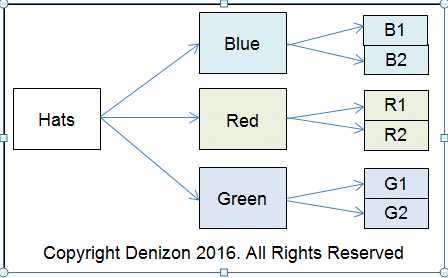One sure way to turn off customers is to give them a disappointing experience. It cuts across the board- from plumbing jobs, electrical installation and maintenance projects, window cleaning or repair, tenants in the property you’re managing, to package delivery firms. If your customers keep witnessing delays, cancelled appointments, to oversights like double booking which end up messing their individual schedules, they are likely to stop hiring your services and seek out a competitor.?
Field service jobs are particularly prone to such blunders, especially with the traditional manual way of doing things. While smartphones and computers have been infused into the day-to-day running of businesses, it is still common to find companies relying on manual processes to schedule their appointments, track the employees providing the services, monitor the progress of the jobs and ask for status updates, to managing inventory and invoices for completed tasks. This creates a major bottleneck in operations. The Small & Medium Business Trends Report, that took responses from nearly 500 SMB owners and leaders, showed that they spend an average of 23% of each workday manually inputting data. This is time that would have otherwise been spent tending to the customers? needs. It creates a backlog of tasks, forcing the customers to wait for longer to get their issues handled.?
The inefficiencies witnessed in these traditional methods led to the advent of field service business management software. These systems come in to optimise operations and enhance your service delivery. As a business, automating your scheduling, job tracking, routing procedures and handling the invoicing, all through a single platform, greatly reduces your workload. Managing inventory, communicating with your employees out in the field through handy apps on their phone, giving them access to a database of reports and notes on the various jobs they have been tasked with – these all aid in smoothing out the sorting of tasks, and gets rid of the mounds of paperwork that would have been required.?
From Your Customer’s Perspective
When you’re facing a plumbing leak at home, electrical faults that result in power outages in the office building, damaged gas boilers that are hampering operations in the industrial plants- you want them to be addressed. Homeowners, business owners and facility managers in these situations are anxious about getting the issue resolved- yet the firm they are relying on to handle it is caught up in a logistical nightmare, boggled down by paperwork that prevents them from sending their technicians to the location. You really don’t want to hear a series of excuses about why your problem could not be addressed in time. While delays can be a nuisance, cancelled appointments are altogether exasperating. See, the customer is left in a difficult position, since the problem is not resolved, and they have to contend with having to make a subsequent appointment- of which they will not be sure if they can bank on the hired firm to deliver on its mandate. With an FSM, you get to prevent such incidents from occurring.
How Your Customers Benefit From Field Service Job Management Software
Reliable services
Firstly, the customer wants services that they can count on. When an issue arises and an appointment scheduled, they want it to be honoured. With the FSM, you get to accurately schedule the tasks, from the timing involved to assigning it to the appropriate technician, who is skilled in the task. With the automated scheduling and dispatching, the technician downtime that was previously witnessed is reduced- which has the welcome benefit of cutting down your operational costs.?
Speaking of which, the confusion that was previously seen when perusing through documents and simply calling up the first employee whose skill is similar to the job description, is avoided. Here, the field service management platform enables you to determine the most appropriate member of your workforce to handle the task. This makes them more motivated at their job, resulting in higher quality results- whether it’s an installation task, repair and maintenance project, or cleaning service for companies providing them in residential and commercial buildings.?
Get it done right the first time around
The field service scheduling software enables the technician to have all the information pertaining to the job accessible in real-time. This is availed via app– that the technicians will have on their phones. It is through this very app that they will make updates of the tasks being handled, sending in notes, photos and reports to the system. These will, in turn, be monitored at the head office all through the progress of the job, being managed through the interactive FSM dashboard.?
With the customer’s history being accessed by the technician, information that includes the specs and hazards about the particular job being handled, notes from the previous technicians who had been tasked to the building- such as the installation crew and previous repairs that had been done, will enable the personnel on the ground make well-informed decisions throughout the course of the task. Any issues that arise will also be taken note of, equipment and parts ordered through the app as well, ensuring that things proceed seamlessly. That way, the percentage of situations getting fully resolved during the first appointment increases- which translates to fewer cases of complaints being made.?
Instant invoicing
Immediately the job is done, the customer inputs their e-signature through the app, and the technician marks the task as completed, the very same FSM is used to process the invoice and send out an emailed copy to the customer. This will be an accurate invoice, without any data loss, and the customer can then proceed to make the payment through their preferred mode- from credit card payments to cash, without having to wait for hours for paperwork to be processed. All this information is securely stored on the cloud-based platform.
Creating a great first impression
Your image is a core part of your operations. Certainly, you don’t want to come off as disorganised- and your customers will be quick to note this with issues like missing records, outdated reports, lateness, and improper assigning of tasks. On the other hand, having a modern digital solution integrated into your field service operations will enable you to make a great first impression, showing the level of professionalism with which you offer your services.
Customer access
FSM platforms like FieldElite also give the customers themselves access to the system, through their own dashboard. This is particularly handy given that there are cases where the customer will have multiple jobs to be carried out- like property managers who keep on having cases of plumbing accidents, electrical faults, and cleaning service needs in the different buildings that they are in charge of.?
Through the customer portal, they will be able to make appointments, track the history of repair and maintenance jobs carried out on the property, and follow up on queries. What’s more, together with the IoT where FieldElite links to ecoVaro, one can have an interactive energy management system in place to keep accurate tabs on the energy consumption, efficiency, point out areas where repairs are needed, and have technicians come over- with the bookings being made through the FSM.
Enhance Customer Experience And Score New Business Opportunities
Customer service is a key aspect of your operations. When your customers are well tended to, with their needs being met in a timely and proficient manner, it wins you their loyalty, and they’ll be more open to sending referrals your way- growing your market share. Feedback- from testimonials on your site to the reviews on your social media handles, also aids in this- and you want to have satisfied clients who will put out a good word about your brand. By investing in field software for service businesses, you will increase your employees? productivity, monitor trends, improve communication between your head office and the technicians on the ground, all of which come together to increase customer satisfaction.




